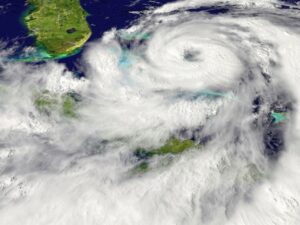In our previous blog series, we discussed the changing climate and various factors that could be affecting it, including human versus natural influences. The recent changes suggest a more volatile and variable climate system – which can have serious impacts on the environment. We’d like to take this blog series a step further to discuss the impacts of a changing climate.
Research has led us to believe that changing climate trends are to blame for recent weather patterns, which have become increasingly volatile and extreme over the past few years – think Hurricane Sandy, the 2013 Colorado floods and Typhoon Haiyan. Extreme weather events have become more frequent and even more destructive, shocking affected communities and sometimes leaving nothing but complete destruction. The devastation of impacted communities is most visible after a horrific storm hits, but infrastructure and governments suffer ongoing consequences.
Flooding has quickly become a major issue due to the frequency of such volatile weather events. In 2007, the Intergovernmental Panel on Climate Change (IPCC) concluded that intense rain events have become even more frequent in the last 50 years. This, combined with increased run-off from changes in land use, means many dire flash flood events will likely continue to occur.
On top of that, the ocean continues to warm, leading scientists to predict that the number of hurricanes, and potentially their intensity, could increase. Higher sea levels from warmer waters also can lead to greater storm surges, and thus more flash floods, from both hurricanes and intense coastal storms.
Increased flooding has the potential to wreak havoc on major population centers in the U.S. as there are currently 3,800 towns and cities that sit in flood plains. According to the U.S. Geological Survey, flooding costs the country more than $7 billion in damages and kills more than 90 people each year, equating to more damage than any other type of disaster over the last century.
In our next blog post, we’ll take a closer look at the trends in frequency and severity of floods and why all public safety managers should be paying attention to them.
For a free download of our new white paper, “The Effects of Climate Change on Flooding”, click here.


